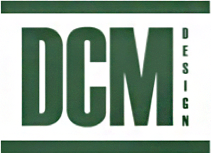Examples of existing converted vehicles
Existing Technology
- Existing trucks have limited ability to move over rough terrain. In the Bangor fire referred to earlier, this may have prevented the fire being extinguished before the damage became severe.
- Fire trucks require a large turning circle, that is they are restricted in the areas they can enter.
- Fire trucks must remain at a safe distance from the fire, with crews running hoses to the fire front. Fire has the potential to burn tyres, preventing trucks from getting too close.
- Even the latest bushfire trucks provide only limited protection from burnover events – when a crew is trapped by a fast moving fire that changes direction unexpectedly, with the fire moving over the vehicle itself. Extreme radiant heat, hot poisonous gases and the removal of oxygen from the surrounding air by the fire, makes this a very dangerous situation for fire-fighters.
DCM Design believes these problems can be overcome with a tracked fire-fighting vehicle. The MURAF is a significant step forward in capability and will change the methodology for fighting bushfires.
Advantages of MURAF
| Tracks not Wheels | Better access to the face of the fire, allowing the vehicle to traverse over flames where wheeled vehicles can’t. It can be driven closer to the fire front in rough terrain. |
| Flat Bottom | A clean underside enables the MURAF to traverse rough and burning terrain without damage |
| Pivot Turning ability | Can turn on its own axis, so is able to access tight spaces where tyred vehicles can’t, e.g. narrow tracks. |
| Large water carrying capacity | Design is for a 6,000 litre capacity, which exceeds current fore trucks. (Demonstration models will match existing capacity at 4,000 litres but will take this water closer to the fire). |
| Enhanced Occupant protection | Deadly radiant heat from burnovers and glass windows is kept outside the vehicle. The cabin is sealed from external hot gases and has air protective ventilation system capability. (The vehicle’s military origin means it was designed to operate within a nuclear, chemical and biological battle zone). |
| Dry fire-fighting capability | Can be fitted with a dozer blade for clearing fire breaks. |
| Amphibious | Can be used in emergency response and recovery operations, or rescue in flood events. |
| Modular | Modules/attachments are available and can be interchanged for fire fighting, Hydraulic Strong Arm, Front blade, Medical, Communications |
- The MURAF is NOT a converted vehicle
- The MURAF is a purpose built “Carrier” with interchangeable modules
- Practically ADR compliant
- Comprises a base tracked platform
- Capability for interchangeable modules.
- Fire fighting (Bushfires/ tunnels)
- Post fire fighting ie tree removal
- Emergency response cargoes.
- Amphibious
- Forestry
- Rescue (Natural disasters/floods/earthquake/tsunami)
- “Driverless” capability for hazard conditions i.e tunnel fires and mines.



